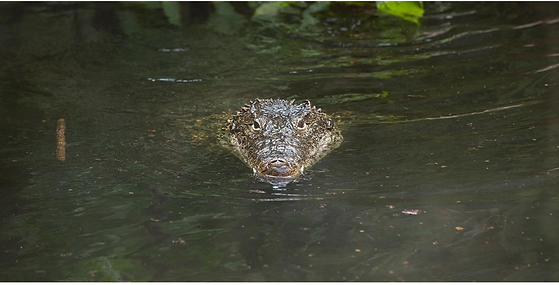
Animals
Introduction
Cuba boasts a vibrant and diverse wildlife, with many species found nowhere else in the world. The island's unique ecosystems, from dense forests to wetlands, provide a haven for rare and endangered animals. One of the most notable is the Cuban crocodile, a fierce and agile predator that thrives in the swamps and marshes of the island, known for its striking green and yellow coloration. Another iconic species is the Cuban trogon, the national bird of Cuba, known for its colorful plumage, including a bright, colorful wings and body. These animals, along with many others, make Cuba’s wildlife a treasure trove of natural wonders.
Torococo and Cuban Crocodile
The Cuban Tocororo is a red, white, and blue bird from the forests of Cuba. They look very similar to the Guatemalan Quetzal. This national bird of Cuba is also known as a Trogon. They play an important role in Cuba’s independence story because they are a metaphor of freedom. If they are kept in a cage or captivity, they often die, so when they are free they live long and happy lives. This metaphor is embraced by many Cuban people. The birds are a medium size ranging from nine to eleven inches. They are usually in pairs, sometimes in groups of three or four. This local name, Tocororo, is onomatopoeic, derived from its repeated call, "toco-toco-tocoro-tocoro". Even though they are an endemic species, they are abundant in population, but the population is decreasing because of habitat loss and deforestation. They eat insects, fruits, small lizards, flowers, and buds. Some of their biggest predators are the Cuban Boa and other large reptiles. The tocororo is important because it represents the country's freedom and its connection to the natural world.
The Cuban Crocodile is an aggressive species of reptile. They are short, with broad heads, a bony ridge behind their eyes, green olive eyes, and tails with blotches of black. Usually around ten and a half feet in length on average. Bigger individuals have been found in the past but are now rare. They are very strong swimmers that have adapted to running and leaping on land. The crocodiles are an animal that relies on external heat sources, like the sun or warm water, to regulate their body temperature, and are called ectotherms or sometimes referred to as cold-blooded. They are found only in Cuba's Zapata Swamp in the southwest and Lanier Swamp on Isla de Juventud. Their historical range also included the Cayman and Bahamian islands. Cuban crocodiles prefer freshwater marshes and swamps similar to those of the Everglades. They rarely swim in saltwater. This species lives for about 50 to 75 years. Juveniles feed on invertebrates and small fish, while adults primarily eat fish, turtles, and small mammals. Using powerful tail thrusts below the surface, they can also leap from the water to catch birds and arboreal mammals from overhanging tree branches. At the Zoo, the crocodiles eat croc pellets, rats, rabbits, and occasionally fish. Cuban crocodiles are important to Cuba because they are a symbol of national pride, play a crucial role in the ecosystem, and are a focus of conservation efforts due to their endangered status and unique characteristics.





Citations
“Cuban Crocodile.” Smithsonian’s National Zoo and Conservation Biology Institute, 25 Apr. 2016, nationalzoo.si.edu/animals/cuban-crocodile. Accessed 26 Feb. 2025.
“The Bird of Freedom | BirdNote.” BirdNote, 23 Sept. 2024, birdnote.org/podcasts/birdnote-daily/bird-freedom. Accessed 26 Feb. 2025.
“Tocororo | Bird | Britannica.” Encyclopedia Britannica, 2025, www.britannica.com/animal/tocororo. Accessed 26 Feb. 2025.